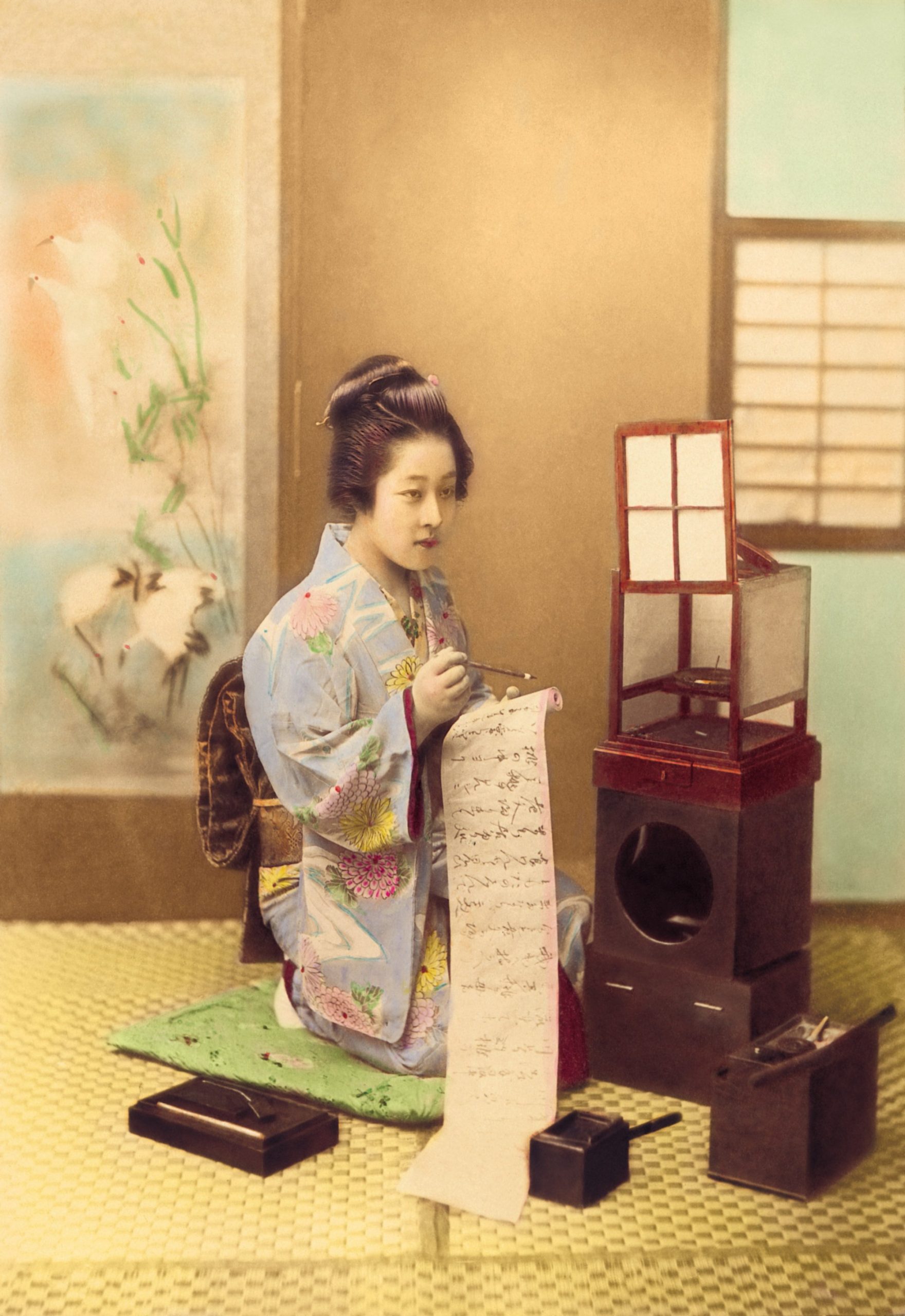The origins of washi can be traced back to ancient China, where papermaking techniques were developed during the Han dynasty (206BC-220AD).

The art gradually made its way to Japan, where it was probably introduced by Chinese artisans and monks who brought Buddhist texts and teachings with them. By the 7th century, Japanese artisans had learned the skill of papermaking and begun to develop their own distinct style.
Arts and crafts are alive in Kanazawa, Japan, living museum of Edo culture
Arts and crafts are alive in Kanazawa, Japan, living museum of Edo culture
It was around this time that many historically significant texts were written on paper, such as Murasaki Shikibu’s famous romance novel The Tale of Genji, and Sei Shonagon’s The Pillow Book.
However, paper was such a luxury during this period that common folk had little to no access to it.
Apart from its artistic applications, washi has long been an essential part of Japanese daily life.

Shoji are traditional Japanese-style sliding doors, window screens and room dividers that use a translucent kind of washi to allow diffused light to enter rooms, creating a serene and peaceful atmosphere in people’s homes.
Washi is also used to make lanterns and various household items. It is also often used to make traditional Japanese umbrellas, symbolising protection and connection to nature.

In Shinto, washi is used to make shide – paper streamers that are attached to ritual wands and used in purification rituals. It is believed that the unblemished quality of washi enhances the sacredness of the rituals in which it is used, and symbolises a connection to nature and spiritual cleanliness.
Additionally, the pliability of washi allows for the intricate folding needed to make shide in their characteristic zigzag shape, while the lightness of the paper enables the streamers to flutter gracefully in the wind during ceremonies.
During the Edo period (1603-1868), when Japan closed itself from the outside world, daimyo – regional warlords – maintained paper mills. As well as using the washi they produced themselves, they also used it to pay tribute to the shogun, who ruled the country.
Japan’s growing thirst for gin and brandy, and the distillers making them
Japan’s growing thirst for gin and brandy, and the distillers making them
The stakes were so high that the papermakers guaranteed the quality of their product with the lives of their entire family.
The tradition remains a major tourist attraction today. The Mandarin Oriental, Tokyo facilitates cultural experiences in which guests can practise washi making.
The hotel is in Nihonbashi Muromachi, a historically significant area in the heart of Tokyo that was the starting point of the Tokaido – the route that connected Edo (modern-day Tokyo) with the ancient Japanese capital, Kyoto.

The Tokaido played a crucial role in facilitating trade, cultural exchange and the movement of people across Japan. Merchants and artisans gathered in Nihonbashi, giving rise to a vibrant marketplace that became a symbol of economic prosperity.
David Collas, the general manager of the Mandarin Oriental, Tokyo explains: “The district is home to many businesses established as far back as the Edo period, with whom we have embarked on collaborative relationships in various capacities.”
He mentions Ozu Washi, a paper company founded in 1653 where washi-making experiences are held as part of the business’ commitment to preserving the art.

“Our visitors can catch a glimpse [of] the centuries-old art of traditional Japanese papermaking at Ozu Washi, as well as the beauty and richness of Japanese culture and history,” Collas says.
One of the things that distinguishes washi from other types of paper is the materials used in its production.
The paper is primarily made from the cambium – the inner bark – of the paper mulberry tree, the mitsumata shrub and the gampi tree. Because such a small part of the cambium of the plants’ twigs is used, around 100kg (220 pounds) of twigs yields only 4kg of paper.

Each plant contributes unique characteristics to the paper: paper mulberry is known for softness, mitsumata for smoothness and gampi for resilience. The combination of these materials creates a durable yet delicate paper that is highly prized.
Washi production became a specialised craft in Japan, with different regions developing their own techniques and styles.
One of the most famous regions for producing washi is Gifu prefecture, particularly the town of Mino, from where a lot of the paper at Ozu Washi is now sourced.

Mino washi, designated as Unesco Intangible Cultural Heritage, is known for its high quality and versatility.
There are techniques that have been passed down through generations pertaining to every step of the washi-making process, from harvesting the plants to boiling the fibres to making each sheet of paper. The steps must be followed meticulously.
The painstaking process begins with harvesting the cambium during the winter months when the sap content is low. The harvested cambium then undergoes a rigorous boiling and cleaning process to remove impurities such as bark, dirt and sap.
The cleaned fibres are beaten manually or mechanically to create a pulp. This step is crucial for achieving the desired texture and strength in the paper. The pulp is mixed with a special mucilaginous liquid made from hibiscus roots and spread evenly on a mesh screen to create thin, delicate sheets. This requires skill to ensure uniform thickness.
The sheets are then pressed to remove excess water and achieve the desired thickness and also to enhance the paper’s texture. The sheets are air-dried naturally, often outdoors, allowing them to absorb the unique characteristics of the environment.
Once dry, the washi paper undergoes final treatments such as sizing, smoothing and dyeing, depending on the intended use.

The same type of emperor-class paper on which official government decrees were written during the Heian period is on sale at Ozu Washi today – for 17,600 yen (US$118.50) a sheet.
